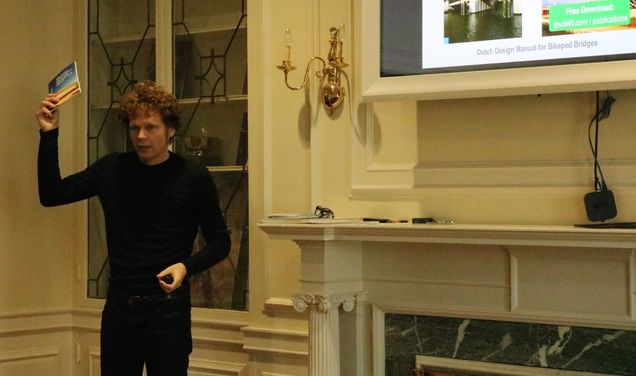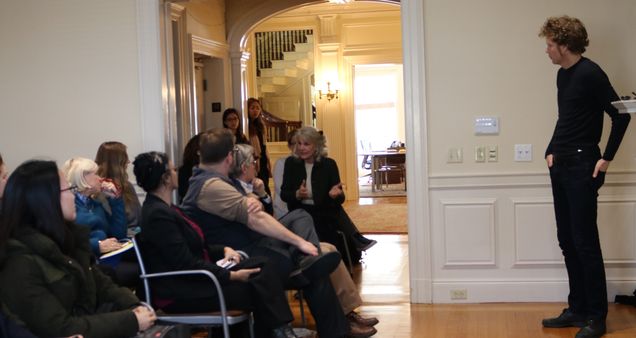Hovenring Designer Adriaan Kok Discusses Building a Livable City

On Friday, January 25th, the Boston University City Planning and Urban Affairs Program, Initiative on Cities, and Sustainability@BU hosted Adriaan Kok, senior project manager and designer for the Dutch company ipv Delft. Passionate about bicycle and pedestrian infrastructure for all, Kok spoke about the process of designing and building the Hovenring, a large suspended bicycle bridge above a roundabout in the Netherlands to keep bicycle and automobile traffic separate. He shared his experiences and lessons learned through the process, and he emphasized how cost-efficient these projects can be.

Kok stressed the importance to “Use Context” when planning a large project. He talked about how filtering can save a lot of money. For example, the signage for the Hovenring was reinforced to stop vehicles that are too large from colliding with the bridge by using a structure that was already required to be there, which ended up being an important cost-saving tool. Another example of using context is to have multi-purpose bicycle paths. Kok explained that the paths can be used for utility vehicles for road maintenance, which will help the flow of automobile traffic. Framing bicycle paths as useful to the flow of automobile traffic might help citizens feel more comfortable with spending some of the budget on bicycle infrastructure.

The lecture concluded with questions from the audience, including how major projects like the Hovenring affect the cost of living. Kok agrees that the price of land will increase in areas with major developments for the U.S., but he says that bicycling is so common in the Netherlands that bicycle infrastructure does not cause gentrification to the degree it does here in the States. Maybe one day bicycling will be so commonplace here that infrastructure will not be seen as a catalyst of gentrification, but a necessity.
To see Adriaan Kok’s presentation slides and other projects, please click here.
Alayna Graham, MCP’19
